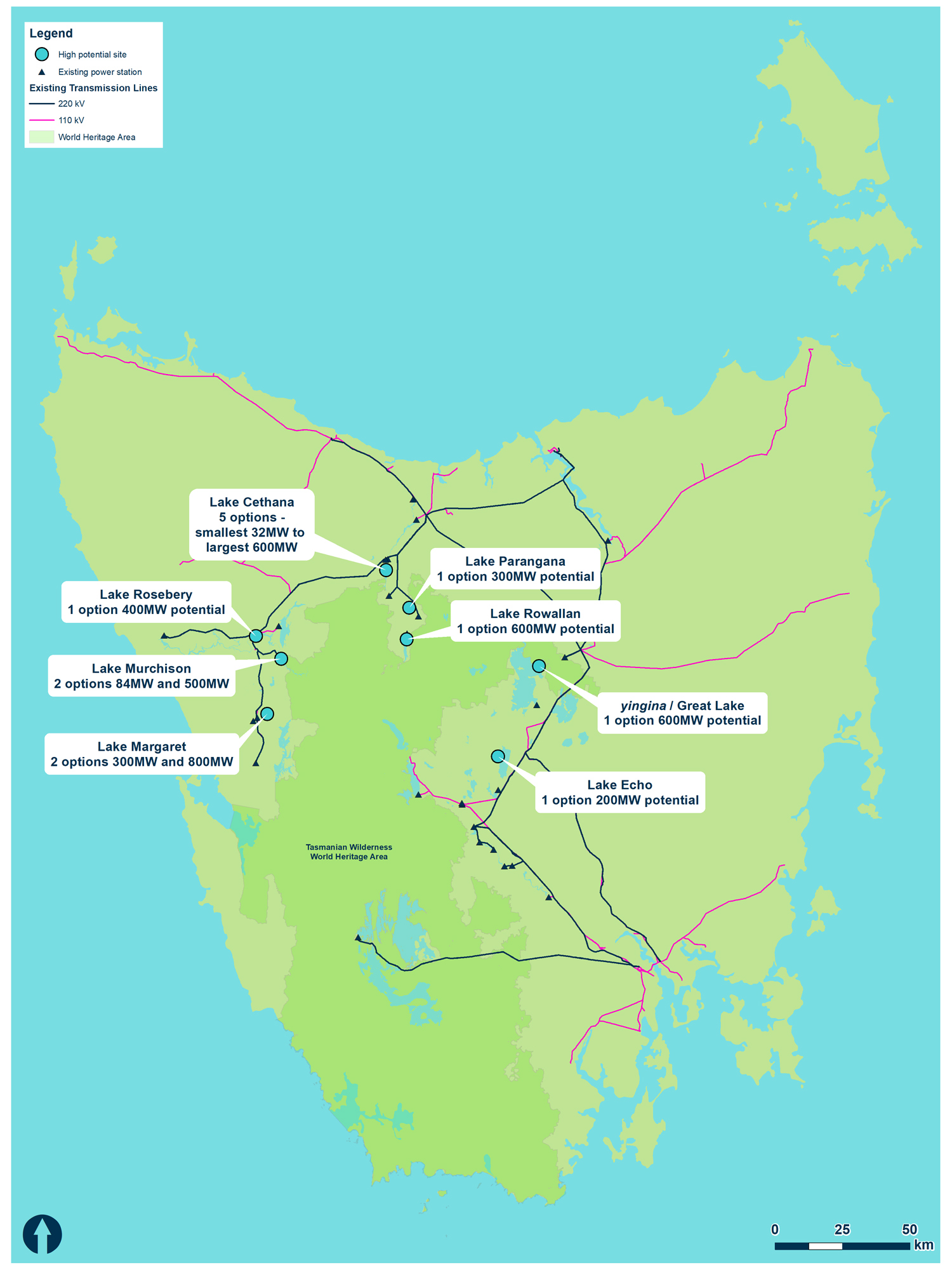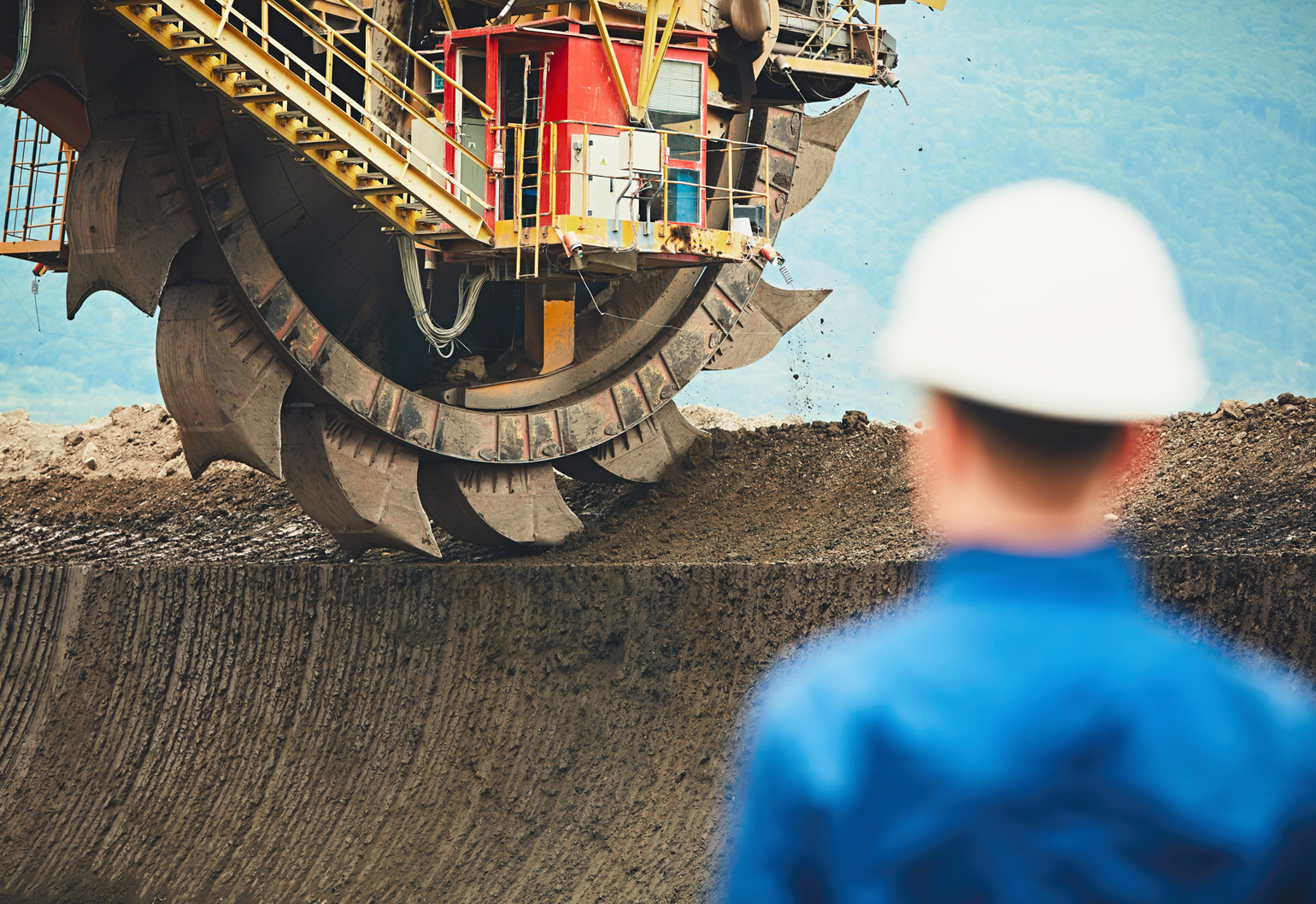Tasmania has revealed the potential locations of 14 pumped hydro sites that together could generate up to 4800 MW.
This capacity is larger than expected, and Hydro Tasmania will now work out which sites are best placed to deliver the state’s target of 2500 MW – almost double Tasmania’s current hydro generation capacity.
Premier Will Hodgman said the scheme has the potential to cement Tasmania’s position as Australia’s powerhouse for clean, reliable and affordable energy, and provide significant benefits to local industry.
“Early modelling shows the construction could create up to $5 billion of investment and around 3000 jobs in regional Tasmania over 10 to 15 years,” he said in a media release.
The $600,000 study, partly funded by the Australian Renewable Energy Agency (ARENA), whittled down over 2000 potential sites to the 14 that showed the highest potential.
Tassie vs. Snowy 2.0
Pumped hydro requires two reservoirs, one placed higher and the other lower. When energy is cheap and plentiful, water can be pumped from the lower reservoir to be stored in the higher reservoir. It can then be released to power a turbine and quickly send energy back into the grid when generation levels are low.

Although it uses more energy than it produces, pumped hydro is a good option for storing energy from variable sources such as wind and solar. According to a 2017 analysis by ANU’s Professor Andrew Blakers, there are at least 22,000 suitable pumped hydro sites in Australia. Combined, these sites could store more renewable energy than the nation could ever use.
The Tasmanian plan would see new dams built in various locations around the island state. In contrast, the Snowy 2.0 has proposed a 27 km tunnel to connect NSW’s massive Talbingo and Tantangara Reservoirs.
ARENA CEO Ivor Frischknecht said if the two projects were compared to a car, Tasmania’s ‘battery of the nation’ has a bigger engine as well as a slightly bigger fuel tank, while Snowy is more focused on the size of the fuel tank.
Compared to Tasmania’s goal of 2500 MW, Snowy 2.0 would deliver 2000 MW of power. In terms of energy, Snowy 2.0 has the potential to store 350,000 MWh, while the 14 sites identified for Tasmania could provide up to 140,000 MWh (although not all of these sites will be utilised).
The Tasmanian scheme also has a lower price tag: the estimated cost is $1.05 – $1.5 million/MW to build, compared to $1.9 – $2.25 million/MW for Snowy 2.0.
According to Federal Energy Minister Josh Frydenberg, there is room for both Snowy 2.0 and the Tasmanian scheme in the pumped hydro game.
“They’re not mutually exclusive, they’re actually compatible with each other,” he told the ABC.
Power in the pipeline
The main limiting factor to Tasmania becoming the ‘battery of the nation’ is the single interconnector (Basslink), which hooks the state into the National Electricity Market (NEM). This is not a truly national grid, as WA and NT are not connected.
A business case for a second trans-Tasman interconnector has been jointly funded by the Tasmanian and Federal Governments. A feasibility study was released in April last year, with the cost of construction estimated at up to $1.1 billion.
Tasmanian Minister for Energy Guy Barnett said the project further strengthens the case for a second interconnector across Bass Strait.
“Tasmania is a renewable energy leader that can more than double our energy supply by 2033 while delivering thousands of new jobs and low-cost clean energy,” he said.



